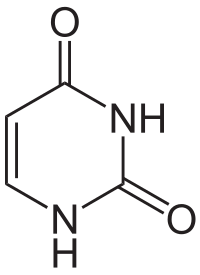
Photo from wikipedia
Abstract Aminophylline (Am) is a methylxanthine compound clinically applied for chronic lung diseases like asthma, bronchitis or emphysema. Chemically, it comprises theophylline and ethylenediamine in a ratio 2:1. For the… Click to show full abstract
Abstract Aminophylline (Am) is a methylxanthine compound clinically applied for chronic lung diseases like asthma, bronchitis or emphysema. Chemically, it comprises theophylline and ethylenediamine in a ratio 2:1. For the widening of the therapeutic window of any class of drug or for the designing of the newer therapeutic compound, an insight into the binding mechanics of available drugs with DNA is quite imperative. In view of that, here in this study we have investigated binding mechanics of aminophylline molecule with calf thymus DNA (Ct-DNA) using various spectroscopic techniques as well as molecular docking approach. Spectral analysis employing UV-visible and fluorescence approach confirmed the formation of aminophylline-Ct-DNA complex. The binding constant was calculated as 3.5 × 104 M−1 with 0.90 as the value of binding site suggestive of minor groove binding mode of aminophylline. The groove binding mode was further confirmed through spectrofluorimetric experiments like competitive displacement assay employing ethidium bromide, hoechst and rhodamine 6 G dyes as well as iodide quenching studies. The circular dichroic spectral evaluation and molecular docking study finally validated the minor groove binding mode of aminophylline with binding energy calculated as −4.5 Kcal/mol.
Journal Title: Journal of Biomolecular Structure and Dynamics
Year Published: 2020
Link to full text (if available)
Share on Social Media: Sign Up to like & get
recommendations!